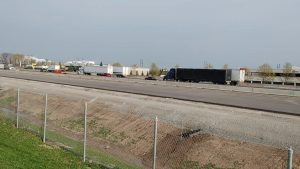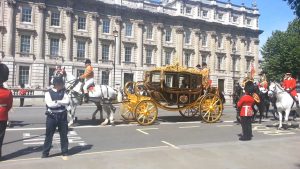“Montego Bay Chamber of Commerce President Pauline Reid to Lobby Government to reconsider completing second city’s stalled deep water improvement project prior to giving go ahead for Falmouth pier development Plan,” or so the headlines read.
Ms. Reid’s recent comments which have been widely reported in the media were thought-provoking, considering the vast potential for tourism development which has lurked for decades along the north coast corridor.
As a result of the myopia of successive governments, Jamaica’s capital Kingston has lorded it over other regions in terms of the disproportionate allocation of public funds for its development. Meanwhile rural Jamaica, including Montego Bay, has not been accorded the benefit of strategic planning and the funds vital to maintaining their infrastructure.
With the expansion of the tourism industry over the years, Montego Bay has climbed to the number two spot on the development totem pole, desperately clinging to its position at the expense of all other regional developmental plans, or so it would seem in light of Ms Reid’s comments.
At first blush her remarks were repugnant — sour grapes come to mind, and on closer examination my initial impressions remained. More puzzling though, were her additional remarks regarding the new Trelawny stadium, whose construction she intimated may have been ill advised, suggesting that other investments in Falmouth or its environs may be seen in a similar light.
Sadly, Ms Reid’s remarks have not provided any evidence to suggest that either venture cannot be successful; all I have heard is that the stadium should have been in Montego Bay, and the Falmouth pier idea is being done at the expense of Montego Bay. Never mind the fact that according to published reports the funding sources for the respective deep water projects are completely separate.
Perhaps it is this kind of reasoning which may explain why a jewel such as the old town of Falmouth in particular, and the parish of Trelawny in general have been neglected by the government and developers for so long.
But why should Kingston and Montego Bay have a monopoly on development in Jamaica? Why must development in one area be perceived as detrimental to another? And why does it appear as if any idea not germinated in Kingston or Montego Bay is to be aborted? Shouldn’t Montegonians spend more time and effort finding new investors to improve their product, than to begrudge other areas their own plans for sustainable development?
Enter Falmouth, the perceived threat and competition to the grande dame that is Montego Bay. Falmouth, where the extravagance of the plantocracy of a bygone era still lingers, having left evidence of its wealth in a well laid-out town with its great Georgian architecture and a port on a well sheltered natural harbor. Worthy of mention being formerly owned by a famous English literary family, ancestors of poet Elizabeth Barrett-Browning, a fantastic old church and historically significant town hall to boot. Did I mention the legacy of the great emancipator William Knibb and the old Baptist manse, or the luminescent lagoon, one of only two places in the world where this exquisite phenomenon occurs?
One could even argue that Falmouth was once the center of Jamaica’s sugar industry and home of some of the region’s finest rums; the new “Outa-Meni” Experience museum, rafting on the Martha Brae and the launch pad for tours of the Cockpit Country, to name a few of its attractions. A recipe for historical tourism or what?
Falmouth’s history is so dissimilar from Montego Bay and has so much potential attractions, that it is mind-boggling that no one really considered its potential for development until now.
Envision a restored Falmouth with antiques shops, tours to Martha Brae, restored sugar mills and the Cockpit Country; a town buzzing with activity as tourists disembark their ships to experience this special slice of Jamaica’s history. Envision the bustling nightlife at the Trelawny pier. If properly planned this may well be the lynchpin in the diversification of tourism product that the county of Cornwall so badly needs if it is to attract new and even more visitors to the north shore and hinterlands.
It is particularly troubling that of one of the finest assets in northern Jamaica, the Trelawny stadium is seen as a white elephant. With good management and planning, that facility can be one of the jewels in the north coast crown.
It is high time those in the industry think outside the box, do something new, and plan for the sustainable growth of the tourism industry, or we may very well be left behind, even while we may possess the best value in what is a very competitive global tourism market.
We need to change our way of thinking and adopt a new paradigm, choosing to be inclusive not exclusive, proactive not reactive, communal not individual, global not insular, finding solutions not excuses.
I hope the new Falmouth pier development will provide a vehicle for this change to take place.












